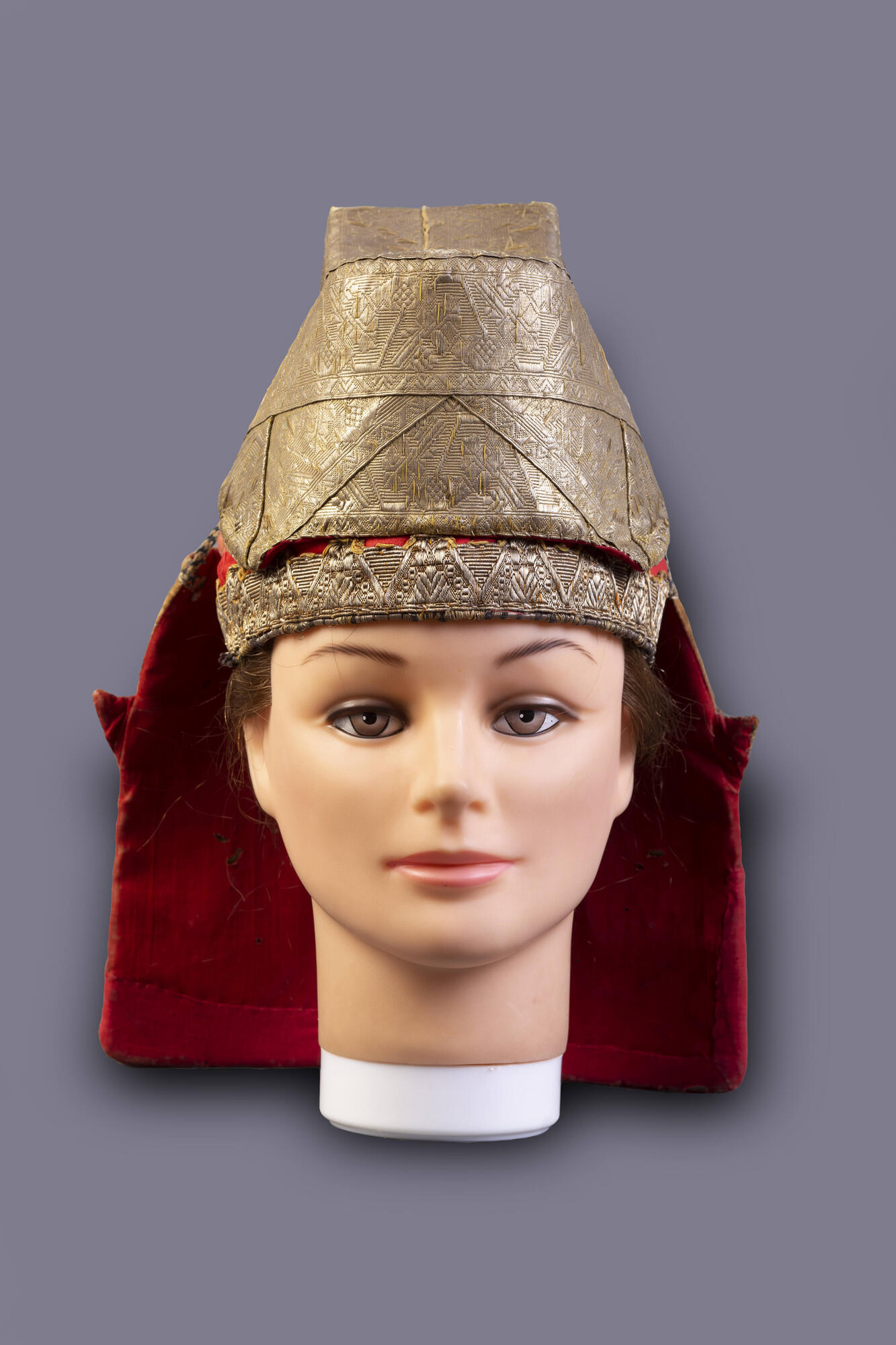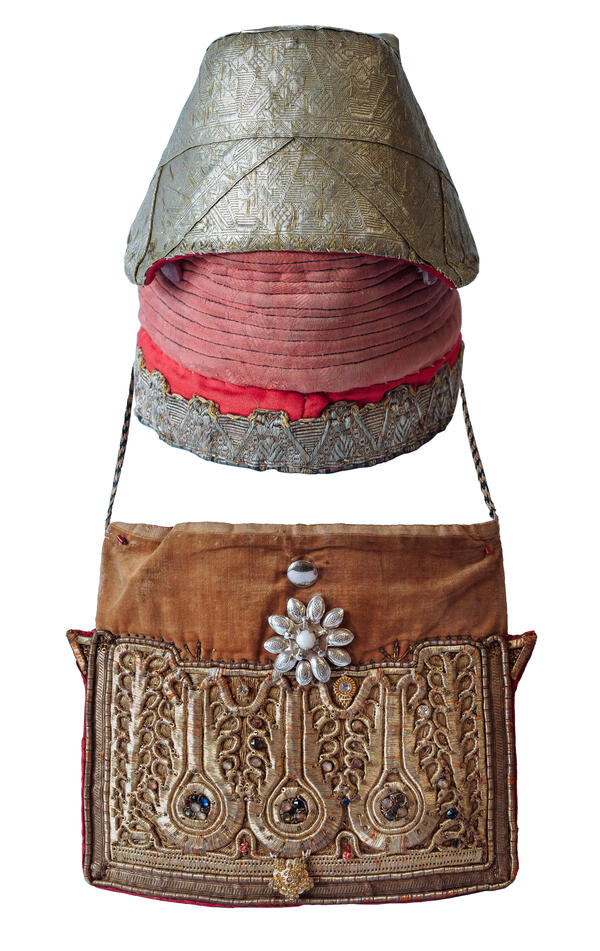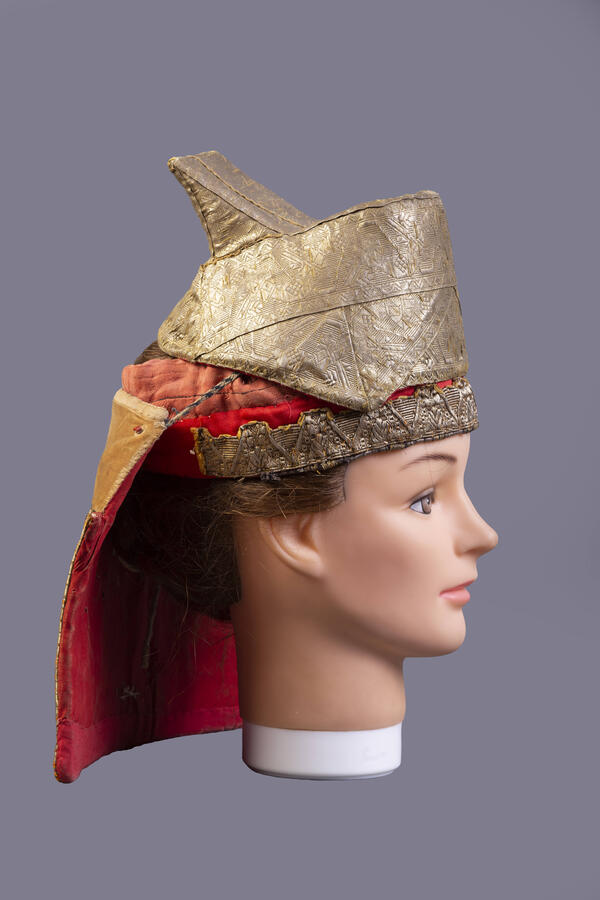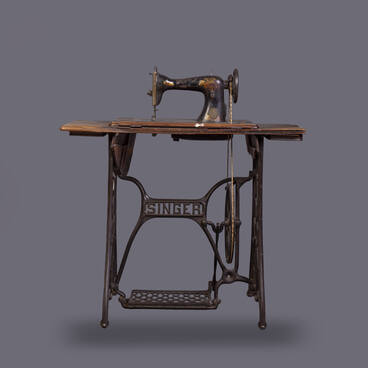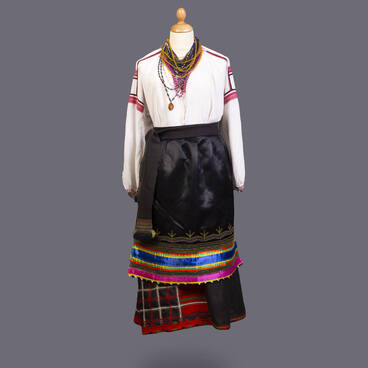A woman’s headdress was an obligatory part of everyday and festive women’s costume. A set of clothes would be incomplete and in ancient times could not even be imagined without a headdress. A woman could not be seen with uncovered head, “bare-headed” outside or even at home.
Headwear, along with other components of folk costume, besides its aesthetic and practical value, had a complex information and semantic implications, since it revealed the gender, age, social and ethnic affiliation of a person. Each type of headdress corresponded to a certain event of the life cycle (wedding, funeral) and age group (youth, adulthood, old age) and communicated information about the region and period the person lived in as well as their social status.
Diverse in form and decorative elements, the headdresses of the women of Belgorod land were divided into maidens’ and ladies’ ones. Girls wore headdresses with an open top. Married women traditionally had to wear headdresses that completely covered their hair from prying eyes. Women’s headdresses were quite diverse. They were mainly kerchiefs, kichkas, kokoshniks, with every county and even village having certain variations. A common feature of women’s headdresses was that they covered the hair completely.
The most beautiful headdresses were those worn by young women for the first few years after the wedding. The women’s festive headdress “Obryada”, dating back to the end of the 19th century, is one of such headdresses.
The festive headdress consists of a kichka, a soroka and a back piece. A kichka is a thick cap, consisting of an elevation over the forehead and a cloth that tightly fits the head. A back piece, covering the hair from behind, is attached to the kichka with braids. The back piece was a rectangular strip of cloth decorated with goldwork, beads and embroidery. On top a soroka was worn. A soroka is a piece of fabric cut and sewn so that it resembles a bird by its shape.
The “Obryada” headdress was brought from the village of Bobrava, Belovo district, Kursk region.
Headwear, along with other components of folk costume, besides its aesthetic and practical value, had a complex information and semantic implications, since it revealed the gender, age, social and ethnic affiliation of a person. Each type of headdress corresponded to a certain event of the life cycle (wedding, funeral) and age group (youth, adulthood, old age) and communicated information about the region and period the person lived in as well as their social status.
Diverse in form and decorative elements, the headdresses of the women of Belgorod land were divided into maidens’ and ladies’ ones. Girls wore headdresses with an open top. Married women traditionally had to wear headdresses that completely covered their hair from prying eyes. Women’s headdresses were quite diverse. They were mainly kerchiefs, kichkas, kokoshniks, with every county and even village having certain variations. A common feature of women’s headdresses was that they covered the hair completely.
The most beautiful headdresses were those worn by young women for the first few years after the wedding. The women’s festive headdress “Obryada”, dating back to the end of the 19th century, is one of such headdresses.
The festive headdress consists of a kichka, a soroka and a back piece. A kichka is a thick cap, consisting of an elevation over the forehead and a cloth that tightly fits the head. A back piece, covering the hair from behind, is attached to the kichka with braids. The back piece was a rectangular strip of cloth decorated with goldwork, beads and embroidery. On top a soroka was worn. A soroka is a piece of fabric cut and sewn so that it resembles a bird by its shape.
The “Obryada” headdress was brought from the village of Bobrava, Belovo district, Kursk region.
